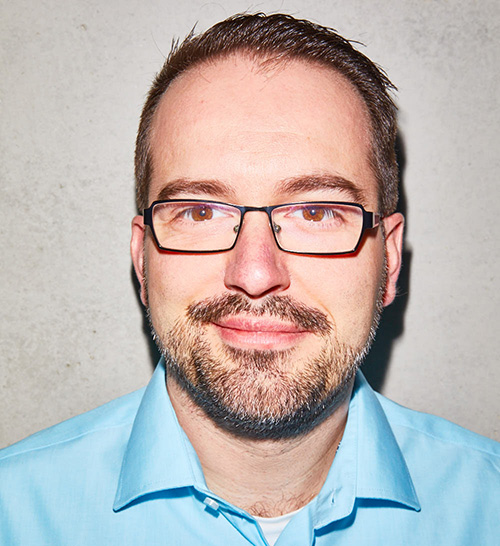Rectifying some common misconceptions about chemistry

From lab assistant to bioeconomist Gerd Unkelbach is a trained chemist and the director of the Fraunhofer Center for Chemical-Biotechnological Processes CBP. Chemistry shouldn’t be seen as a source of problems but as a means of solving problems, he says.
In the public mind, the word “chemical” is often associated with negative things such as pollution. Mr. Unkelbach, are chemicals as bad as they’re made out to be?
Unkelbach: The lives we live today would not be possible without chemical transformation processes. Some 98 percent of the products we use on a daily basis have undergone chemical processing in one way or another. None of this would exist without chemistry – although, admittedly, there would be fewer risks too. But we would also miss out on many, many good things.
I get the gist: Your view of synthetic chemicals is that they are a boon for mankind, not a threat to the world.
Absolutely, especially when they are made from renewable raw materials, as we do here at the Fraunhofer Center for Chemical-Biotechnological Processes CBP. However, even sustainable production processes can do more harm than good, and yet still earn green credentials. That is why I consider two essential questions when developing a new process: Is it genuinely eco-friendly? And is it safe?
How do you weigh up the different factors?
Take, for example, the water-repellent functional clothing that walkers today consider indispensable when taking a breath of fresh air in the countryside. The perfluorinated chemicals used to waterproof fabrics are notoriously bad for the ozone layer once they escape into the atmosphere. But safer waterproofing products for clothing can be made by means of biocatalysis. We are working on projects like this at Fraunhofer CBP. Our overriding aim is to find safe substitutes for as many dangerous substances as possible and replace processes requiring harsh reaction conditions with processes based on chemical or biotechnological catalysis, which have the added benefit of consuming less energy.
So, for you, the chemicals industry is not the source of the problem but a source of solutions.
Without synthetic chemistry, we would never have achieved such a high standard of living – and with it, the ability to solve so many of the problems facing humanity.
And this brings us back around to the issue of sustainability. Does sustainability necessarily mean having to do without, being satisfied with less, and earning less money?
My opinion on that point is even more radical: If we can’t earn money from what we do as researchers, we will never be able to scale up our projects for industrial application, and our ideas will never gain traction. Of course there are projects dreamed up by idealists who want to do something unique and sensational, but only multimillionaires can spend that much money – usually to soothe their conscience – without having to worry whether a solution is scalable. For any project to succeed without government support, and hence without being subject to the vagaries of politics, it must stand on its own two feet as quickly as possible. Of course we accept seed money to minimize risks and get things started. But the underlying business model must support itself – and be a money-spinner.
Judging by the number of people it employs, the chemicals industry is certainly still going strong.
Indeed, it accounts for 460,000 jobs in Germany, which is the largest producer of chemicals in Europe. The sector is a huge contributor to the country’s gross domestic product (GDP). The chemicals industry is just as important to Germany as the automotive sector, except that it is less talked-about. Sadly, most people aren’t aware of that, or don’t want to know. Car owners and drivers rarely ask themselves where the nylon for the seat covers or the polyurethane for the dashboard comes from.
What are you spending most time on at the moment?
My favorite research subject is lignin, a renewable raw material. It is found in wood and straw or basically in any plant with woody stalks or stems, where it holds together the cellulose fibers and protects them from being broken down by bacteria. Lignin is the glue that stiffens plant stems and enables trees to grow upwards so that their leaves can capture the sunlight they need for photosynthesis. However, the lignin in every plant is structured differently. This makes things extremely difficult for chemists who want to use lignin in its molecular form. For me, it is an exciting challenge to grapple with these difficulties and try to create a basis on which new products can be manufactured. Someone once commented wryly that you can make anything from lignin except money! Stubborn as I am, that motivated me even more to prove them wrong by redoubling my efforts to produce lignin-derived compounds that can be used in industry with profitable results.
Fraunhofer CBP does a lot of research into renewable raw materials. In which areas do you see the most potential?
Our aim is to develop sustainable products to substitute for those currently based on fossil resources. Or, preferably, new products with better properties than their fossil-based predecessors. Imagine, for example, a plastic film that is not only bio-based and biodegradable but also more tear-resistant.
So, by combining a lower environmental impact with improved user benefits you enable manufacturers to earn higher profits?
Yes. If a product offers more, then consumers will be willing to pay more for it. At first it will be sold in the high-end market, and later in the mass market. That way we can really make a difference – both for business and for the environment.
How do you go about drumming up young people’s interest in chemistry?
With a very simple message: You can serve good causes with chemistry – and earn money while doing so.